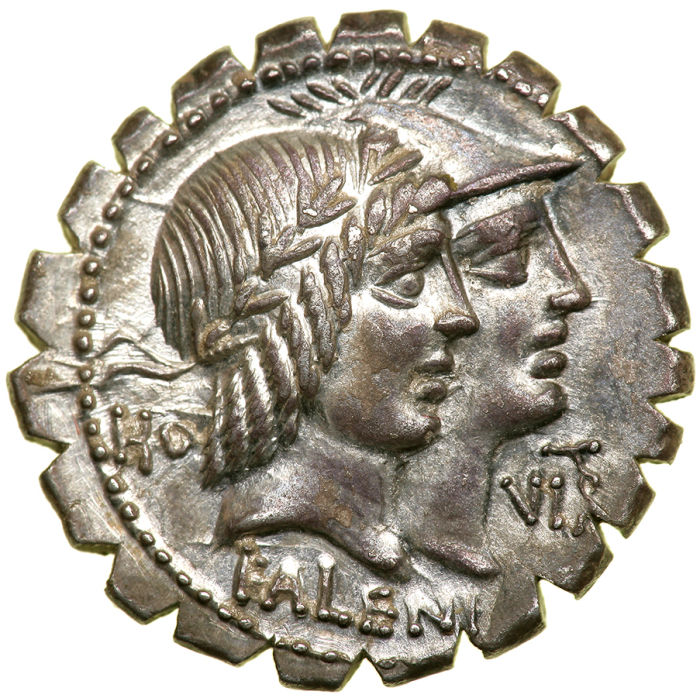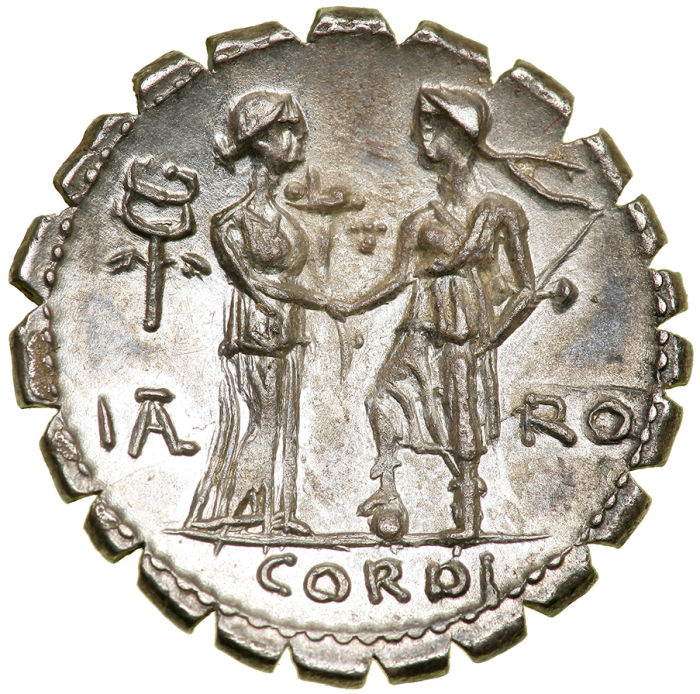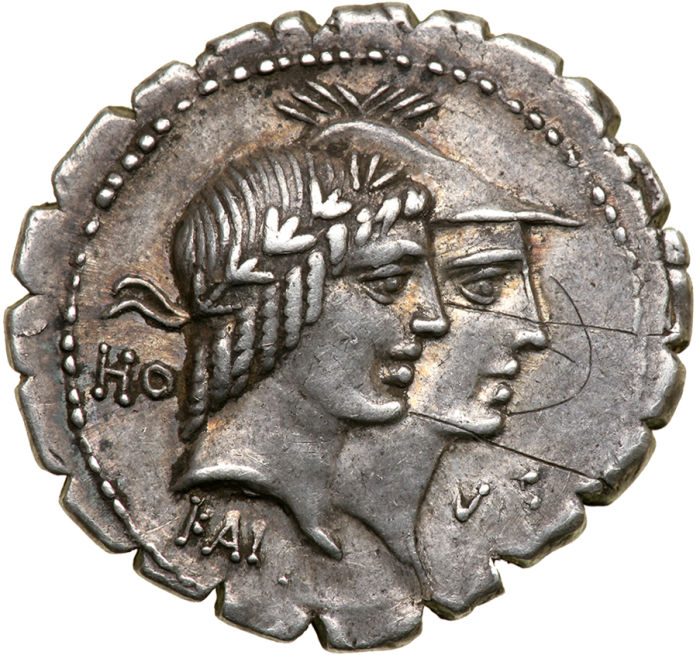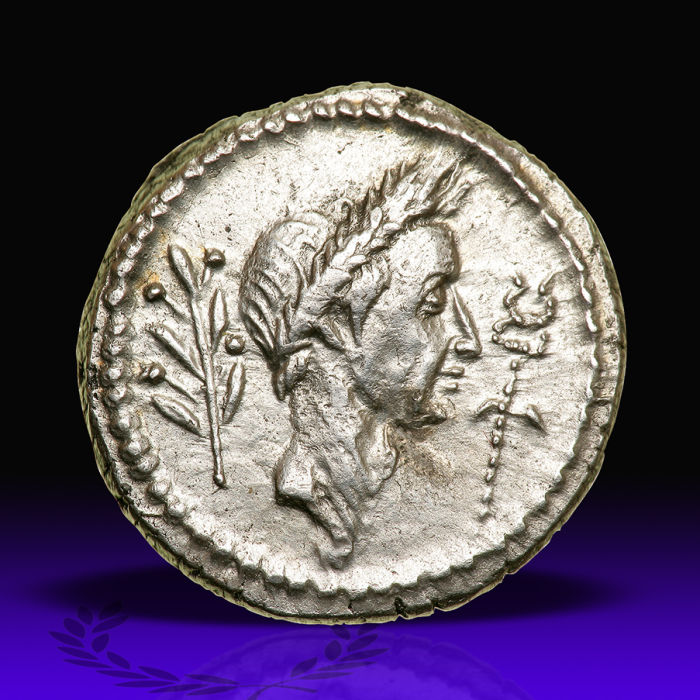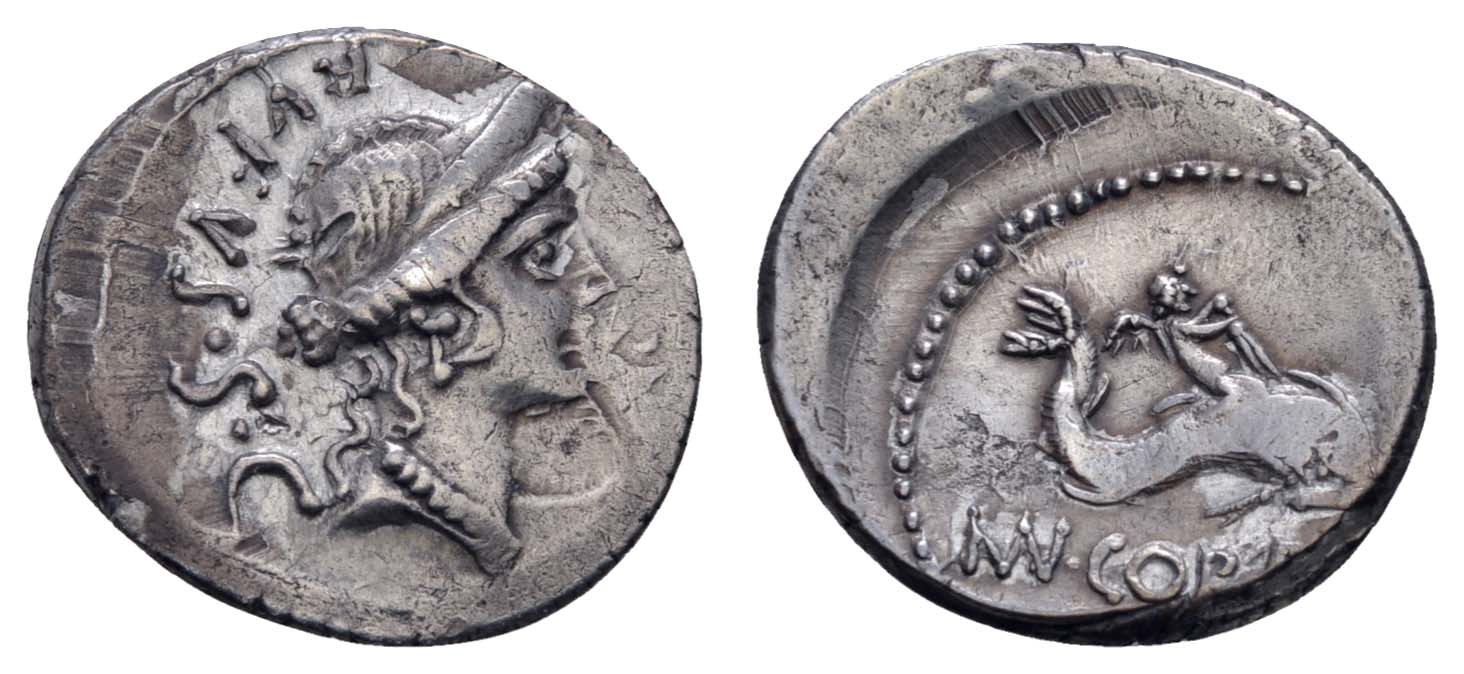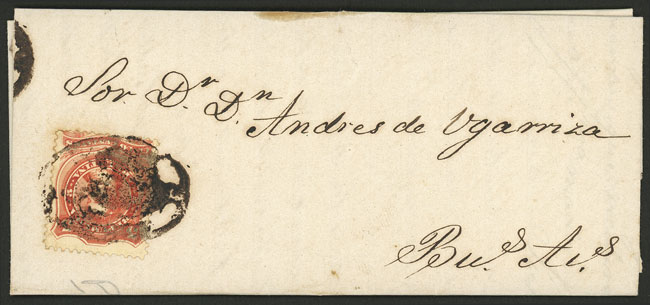By: Ira & Larry Goldberg Coins & Collectibles, Inc.
lot # 3037 - denarii collection - roman republic
Q. Fufius Calenus and M. Cordus. Silver Denarius (3.80 g), 68 BC. Rome. HO behind, VI(RT) before, KALENI below, conjoined heads of Honos, laureate, and Virtus, wearing crested helmet, right. Reverse CORDI in exergue (ITAL) to left, RO to right, Italia standing right, holding cornucopiae, clasping hands with Roma standing left, foot on globe, holding scepter; in left field, winged caduceus. Crawford 403/1; Sydenham 797; Fufia 1. Well struck with the obverse in high relief. A lustrous example and delicately toned. Mint State.
Most interpretations of the types on this coin relate the obverse depiction of Honos and Virtus with the reverse design showing reconciliation between Rome and Italy. Grueber even goes as far as to place this reconciliation under the tutelage of the gods Honos and Virtus, which of course on the surface seems entirely appropriate. However, there is another possible interpretation of the types that is espoused by Harlan, one which requires considering the obverse and reverse in isolation from one another. From this point of view, Calenus, whose design appears on the obverse, selected a type which was reflective of his Marian sympathies and popularis politics (in his later career Calenus became a popularis politician closely aligned with Caesar). Gaius Marius had dedicated a temple to Honos and Virtus after his conquest of the Cimbri in 101 BC, and of all his monuments it was the only one to survive destruction under Sulla. During the years since Sulla's dictatorship, anything remotely related to Marius was considered taboo, and it was only early in 69 BC when Caesar gave a public funeral oration for his aunt Julia, who was the widow of Marius, that attitudes began to change regarding the deceased political reformer.
The identification of the moneyer whose name CORDI appears on the reverse of this coin is debated. He is normally identified as Mucius Cordus Scaevola, but this seems unlikely as Scaevola acquired his cognomen for performing a daring act of bravery, and it would therefore be natural to use that name instead of CORDI. More plausible is that the moneyer is one Manius Cordius Rufus of Tusculum, the father of the Caesarian moneyer Manius Cordius of 46 BC. This supposes that he identified with the popularis political philosophy of his colleague, Calenus, and also better relates to the reverse in that he was a novus homo (new man) in Roman politics, having come from a municipia that benefitted from Roman citizenship following the Social War.
Estimated Value $1,500 - 2,000.
Ex LHS 100 (23-24 April 2007), 396.
Ira & Larry Goldberg Auctioneers
Ira and Larry Goldberg are experts in the Numismatic field with over 50 years of experience. In 2010, they were each awarded a Lifetime Achievement for their contributions to the Numismatic... Read More
Send Email to Ira & Larry Goldberg Coins & Collectibles, Inc. Or Visit WebSite

